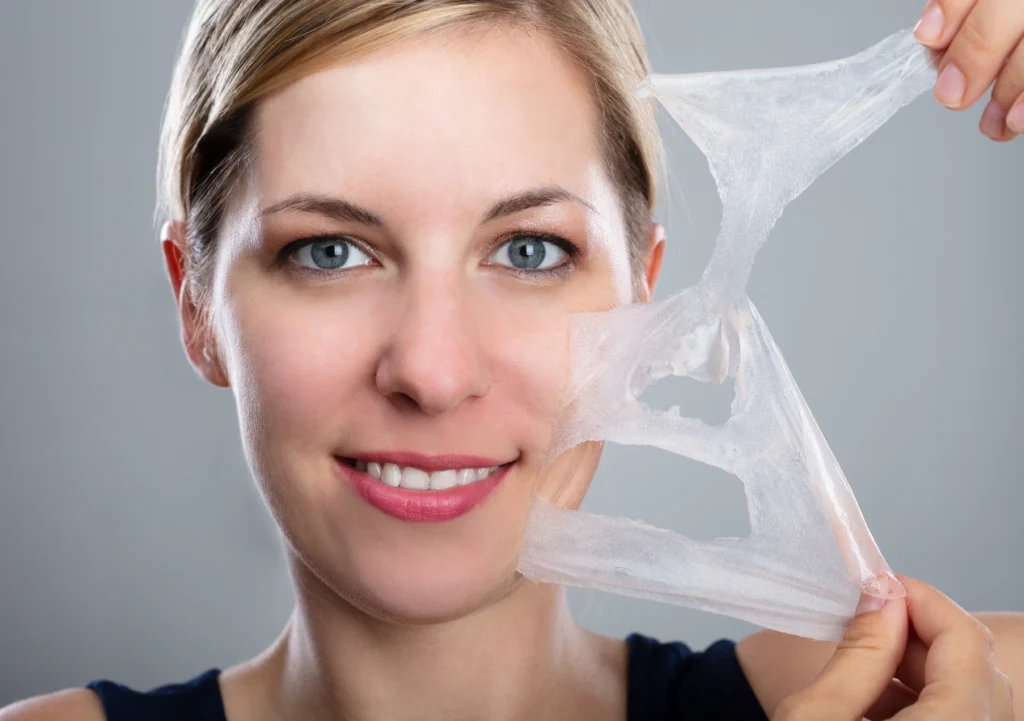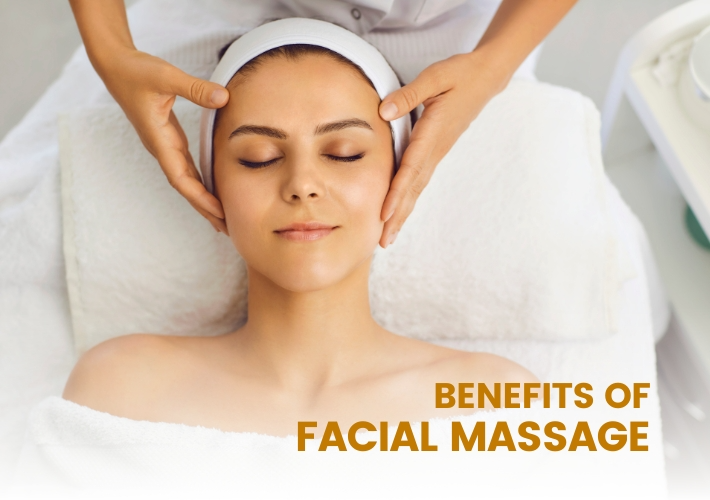
Welcome to the magical world of chemical peels, where flawless skin is just a few steps away. In this step-by-step guide, we will explore the wonders of the chemical peel process and unravel the secrets to achieving that enviable complexion.
Chemical peels have gained popularity for their remarkable ability to rejuvenate the skin, diminish imperfections, and enhance its natural radiance. Whether you’re struggling with acne scars, uneven texture, or stubborn pigmentation, a chemical peel could be the transformative solution you’ve been searching for.
Throughout this guide, we will walk you through each stage of the process, starting from the initial consultation to the post-peel care. You will learn about the different types of peels available, their specific benefits, and what to expect during and after each treatment.
If you’re struggling with scars, consider a face peel for scars to help reduce their appearance and achieve smoother skin.
So, if you’re yearning for flawless, glowing skin, you’ve come to the right place. Get ready to dive into the enchanting world of chemical peels and unlock the power of transformative skincare. Let’s embark on this journey together and discover the magic within the peel.
Benefits of Chemical Peels

Chemical peels have gained popularity for their remarkable ability to rejuvenate the skin, diminish imperfections, and enhance its natural radiance. These treatments offer a wide range of benefits that can address various skin concerns, making them a go-to option for many individuals seeking to achieve flawless skin.
One of the primary benefits of chemical peels is their ability to exfoliate the skin. By applying a chemical solution to the face, the top layer of dead skin cells is effectively removed, revealing a fresh layer of skin underneath. This process not only promotes cell turnover but also helps to reduce the appearance of fine lines, wrinkles, and acne scars.
Another advantage of chemical peels is their effectiveness in treating hyperpigmentation. Whether you’re dealing with sunspots, age spots, or melasma, chemical peels can help to even out your skin tone and fade these pesky pigmentation issues. The exfoliating action of the peel encourages the production of new, healthy skin cells, leading to a brighter, more radiant complexion.
Furthermore, chemical peels can also be an effective solution for individuals struggling with acne. By removing the top layer of dead skin cells and unclogging pores, chemical peels can help to reduce acne breakouts and minimize the appearance of acne scars. These treatments can also regulate oil production, resulting in a clearer, smoother complexion.
Discover the advantages of chemical peel treatments for rejuvenating your skin and addressing various imperfections.
In summary, the benefits of chemical peels include exfoliation, reduction of fine lines and wrinkles, fading of hyperpigmentation, improvement of acne, and overall enhancement of the skin’s radiance and texture.
Preparing for a Chemical Peel

Before undergoing a chemical peel, there are a few essential steps to ensure optimal results and minimize any potential risks. Here’s a guide on how to prepare for a chemical peel:
1. Consultation
The first step is to schedule a consultation with a qualified skincare professional. During this appointment, you will discuss your skin concerns, medical history, and any medications you are currently taking. The skincare professional will evaluate your skin and determine the most suitable type of peel for your specific needs.
2. Skin Preparation
Depending on the type of peel recommended, your skincare professional may advise you to prepare your skin in the weeks leading up to the treatment. This may involve using specific skincare products, avoiding excessive sun exposure, and discontinuing the use of certain medications or topical treatments. Following these instructions is crucial to ensure your skin is in the best possible condition for the peel.
3. Patch Test
Before undergoing a chemical peel, a patch test may be performed to assess your skin’s reaction to the chemical solution. This involves applying a small amount of the peel to a discreet area of your skin and monitoring for any adverse reactions. The patch test helps to determine the appropriate strength and duration of the peel for your skin.
By following these preparation steps, you can ensure that your skin is ready for the chemical peel process and increase the likelihood of achieving optimal results.
To maximize results, it’s essential to understand how often to get chemical peel treatments based on your skin type and concerns.
Step-by-Step Guide to the Chemical Peel Process

Now that you’re prepared for the chemical peel, let’s dive into the step-by-step guide to the process itself. While the specifics may vary depending on the type of peel you’re undergoing, the general steps remain consistent.
1. Cleansing
The first step of the chemical peel process is cleansing the face thoroughly to remove any dirt, oil, or makeup. This ensures that the chemical solution can penetrate the skin effectively.
2. Application of the Chemical Peel
The skincare professional will then apply the appropriate chemical solution to your face, using a brush or sponge. The solution is carefully applied in an even layer, ensuring all areas are covered.
3. Monitoring the Reaction
Once the chemical peel is applied, your skincare professional will closely monitor your skin’s reaction to the solution. The duration of the peel will depend on the type of peel and your skin’s response. During this time, you may experience a tingling or stinging sensation, which is normal.
4. Neutralization
After the desired duration, the chemical peel is neutralized by applying a neutralizing solution or rinsing the skin with water. This stops the exfoliation process and ensures that the peel does not penetrate deeper into the skin than intended.
5. Moisturization and Sun Protection
Following the peel, your skincare professional will apply a soothing moisturizer to help hydrate the skin and promote healing. They may also recommend specific post-peel skincare products to enhance the results. Additionally, it is crucial to apply sunscreen daily to protect the newly exposed skin from harmful UV rays.
6. Post-Peel Care
Your skincare professional will provide you with detailed instructions on how to care for your skin post-peel. This may include avoiding excessive sun exposure, using gentle cleansers and moisturizers, and avoiding harsh skincare products or treatments for a certain period.
By following these steps and adhering to the post-peel care instructions, you can maximize the benefits of your chemical peel and minimize any potential side effects.
Aftercare and Recovery Tips

Proper aftercare is essential to ensure optimal healing and results after a chemical peel. Here are some important aftercare and recovery tips to keep in mind:
1. Keep the Skin Hydrated
Following a chemical peel, it’s important to keep the skin well-hydrated. Use a gentle, non-irritating moisturizer to soothe and hydrate the skin. Avoid products with harsh ingredients or fragrances to prevent any further irritation.
2. Avoid Sun Exposure
UV rays can be particularly harmful to freshly peeled skin. It’s crucial to avoid excessive sun exposure and wear sunscreen with at least SPF 30 daily. Opt for wide-brimmed hats and protective clothing when spending time outdoors.
3. Be Gentle with Your Skin
During the recovery period, be gentle when cleansing and moisturizing your skin. Avoid scrubbing or using harsh exfoliants that can irritate or damage the newly treated skin. Pat your skin dry instead of rubbing it with a towel.
4. Avoid Picking or Peeling
It’s important to resist the temptation to pick or peel any flaking or peeling skin. Allow the skin to naturally slough off, as interfering with this process can lead to scarring or inflammation.
5. Follow the Skincare Professional's Instructions
Your skincare professional will provide you with specific aftercare instructions tailored to your skin and the type of peel you underwent. It’s crucial to follow these instructions carefully to ensure optimal healing and results.
By following these aftercare tips, you can support the healing process and enhance the results of your chemical peel.
Learn about wearing makeup after chemical peel to ensure you don’t compromise your skin’s healing process.
Who Should Avoid Chemical Peels

While chemical peels offer numerous benefits, there are certain individuals who should avoid or approach them with caution. It’s essential to consult with a skincare professional to determine if chemical peels are suitable for you, especially if you fall under any of the following categories:
1. Pregnant or Breastfeeding
Chemical peels have not been extensively studied in pregnant or breastfeeding individuals. To err on the side of caution, it is generally recommended to postpone chemical peels until after pregnancy or breastfeeding.
2. Skin Infections or Open Wounds
If you have active skin infections, open wounds, or a history of keloid scarring, chemical peels may not be suitable. It’s crucial to let your skincare professional know about any existing skin conditions or allergies before undergoing a peel.
3. Recent Facial Surgery
If you have recently undergone facial surgery, it’s important to allow sufficient time for healing before considering a chemical peel. Your skincare professional can advise you on the appropriate timing based on your specific case.
4. Certain Medications or Skin Conditions
Some medications, such as isotretinoin (Accutane), may increase skin sensitivity and make chemical peels unsuitable. Additionally, individuals with certain skin conditions, such as eczema or rosacea, may need to approach chemical peels with caution or avoid them altogether.
Always consult with a skincare professional to determine if chemical peels are safe and appropriate for your specific circumstances. They will evaluate your medical history, assess your skin condition, and provide personalized recommendations.
Professional vs. At-Home Chemical Peels

While there are at-home chemical peel options available, it is generally recommended to undergo professional chemical peels for optimal results and safety. Here’s a comparison between professional and at-home chemical peels:
Professional Chemical Peels
- Performed by qualified skincare professionals
- Tailored to your specific skin concerns and needs
- Utilize higher concentrations of active ingredients for more noticeable results
- Enhanced safety measures and protocols
- Professional guidance and support throughout the process
At-Home Chemical Peels
- Generally milder and less potent than professional peels
- May provide some improvement for mild skin concerns
- Less expensive than professional peels
- Require careful adherence to instructions and precautions
- Limited customization and professional guidance
While at-home chemical peels can be a more affordable option, they may not deliver the same level of results or safety as professional treatments. It’s important to weigh the benefits and risks and consult with a skincare professional to make an informed decision.
Conclusion: Achieving Flawless Skin with Chemical Peels
In conclusion, chemical peels offer an enchanting journey towards flawless, glowing skin. With their ability to exfoliate, rejuvenate, and enhance the skin’s natural radiance, chemical peels have become a popular choice for individuals seeking transformative skincare solutions.
By understanding the benefits, types, and process of chemical peels, you can embark on this magical skincare journey with confidence. Remember to consult with a skincare professional, follow proper preparation and aftercare steps, and debunk any myths or misconceptions surrounding chemical peels.
Ready to experience the benefits? Book online for chemical peel in Arlington and take the first step towards flawless skin today.
Unlock the power of chemical peels and discover the magic within. Let your skin radiate with flawless beauty and embrace the transformative results that await you. The journey to flawless skin starts now.
Book an Appointment
Revitalize your skin in Arlington, VA with top-notch facials and peels. Book your transformation today!
Book NowLocated in Arlington, VA
Recent Blogs
-
HydraFacial Neck and Decollete: Experience Radiant Skin from Head to Chest
-
5 Tips for Managing Oily Dehydrated Skin: Your Guide to a Healthy Glow
-
Microneedling Under Eyes: Say Goodbye to Puffiness and Dark Circles!
-
Hydrafacial Before Wedding: Get Ready to Glow on Your Special Day
-
Ultimate Skincare Solution: The Power of Hydrafacial for Dry Winter Skin
-
Understanding Dermaplaning Facial: A Comprehensive Guide to Beauty Secrets
-
7 Winter Skin Care Tips for Arlington Adults to Keep Their Skin Healthy
-
Discover the Incredible Benefits of Facial Massage
-
The Secrets of Skincare: Dive into the 7 Steps of Hydrafacial Treatment
-
Hydration vs. Moisture: What Does Your Skin Really Need?









